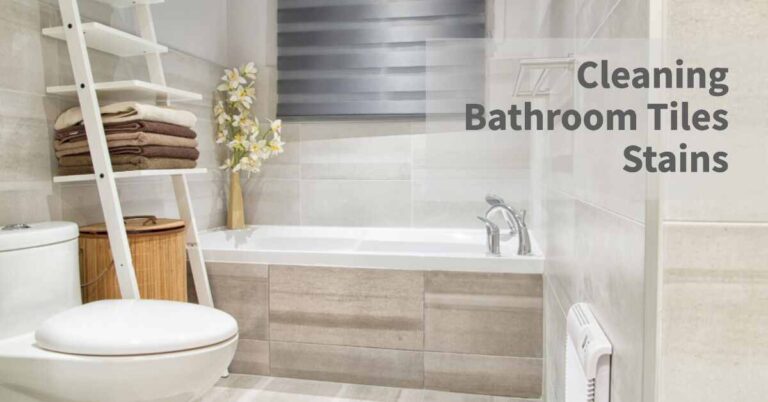When it comes to public restroom design, the size of the bathroom stall plays a crucial role in user comfort, accessibility, and privacy. A well-designed bathroom stall can significantly impact the overall restroom experience, ensuring that users feel at ease and have their needs catered to.
In this comprehensive article, we will delve into the various dimensions of bathroom stalls, exploring standard measurements, variations, and the implications of different sizes on user experience. Join us on this insightful journey as we uncover the importance of bathroom stall dimensions and their impact on the overall restroom design.
- Standard Dimensions of Bathroom Stalls:
- Examining Height Requirements for Standard Bathroom Stalls:
- Variations in Bathroom Stall Sizes:
- ADA Compliance: Accessible Bathroom Stall Dimensions:
- Implications of Bathroom Stall Sizes:
- Safety, Accessibility, and Privacy Features:
- Design Considerations for Optimal Space Usage:
- Environmental Considerations:
- Cultural and Societal Influences on Bathroom Stall Sizes:
- Privacy and Comfort Solutions:
- Legal Requirements and Building Codes:
- User Surveys and Feedback:
- International Comparisons:
- Conclusion:
- FAQ
- Resources
Standard Dimensions of Bathroom Stalls:
Exploring Typical Width and Depth of Bathroom Stalls:
The first consideration in understanding bathroom stall size is the width and depth. Standard bathroom stalls are typically designed to accommodate a single user at a time, ensuring enough space for comfortable use.
The typical width of a bathroom stall ranges from 32 to 36 inches, while the depth varies between 48 to 60 inches. These dimensions are carefully chosen to balance providing enough space for the user and efficiently utilizing restroom floor space.
Examining Height Requirements for Standard Bathroom Stalls:
Apart from width and depth, the height of the bathroom stall is equally critical for user comfort and privacy. The standard height for bathroom stall dividers is around 58 to 60 inches. This allows for adequate privacy while ensuring users can comfortably access and exit the stall.
Variations in Bathroom Stall Sizes:
Understanding Width and Depth Variations Among Different Types of Bathroom Stalls:
While standard bathroom stalls are common in most public restrooms, variations in width and depth can be found in specialized facilities.
For instance, family restrooms may feature larger stalls to accommodate parents with young children or individuals with mobility aids.
Similarly, some restroom designs may opt for narrower stalls to maximize space efficiency in high-traffic areas like airports or stadiums.
Analyzing Height Variations in Bathroom Stall Designs:
In certain establishments, such as upscale restaurants or exclusive clubs, designers may install full-height bathroom stall dividers for enhanced privacy.
On the other hand, in more open and casual environments, lower-height stall dividers may be used to create a more inviting and social atmosphere.
ADA Compliance: Accessible Bathroom Stall Dimensions:
Clarifying Americans with Disabilities Act (ADA) Requirements:
Ensuring accessibility for individuals with disabilities is a fundamental aspect of restroom design. The Americans with Disabilities Act (ADA) sets specific requirements for bathroom stall dimensions to accommodate individuals using mobility aids, such as wheelchairs.
Identifying Specific Dimensions for Accessible Bathroom Stalls:
According to ADA guidelines, accessible bathroom stalls should have a minimum width of 60 inches and a depth of 59 inches. These larger dimensions allow individuals using wheelchairs to maneuver comfortably within the stall.
Additionally, the height of the stall should be at least 60 inches to provide sufficient privacy and accessibility.
Implications of Bathroom Stall Sizes:
Assessing the Impact of Small Bathroom Stall Sizes on User Comfort and Privacy:
Smaller bathroom stall sizes may accommodate more stalls within a limited area in facilities with limited space, such as older buildings or compact restrooms.
However, using smaller stalls can have implications for user comfort and privacy. Some users may feel cramped, leading to a less satisfactory restroom experience.
Highlighting the Benefits of Larger Bathroom Stalls for Enhanced User Experience:
Conversely, larger bathroom stalls provide ample space for users to move comfortably and safely within the stall. This can contribute to a more pleasant and relaxed restroom experience, especially for individuals with special needs or parents with young children.
Safety, Accessibility, and Privacy Features:
Ensuring Safety and Accessibility through Proper Grab Bar Placement:
To enhance safety and accessibility, bathroom stalls should have sturdy and strategically placed grab bars. Grab bars support individuals with mobility challenges and can prevent accidents, making restroom use more inclusive.
Examining Floor Space for Maneuverability and Safety Considerations:
The floor space within a bathroom stall is essential for users to maneuver comfortably. Adequate floor space ensures that users can easily access and use restroom fixtures while maintaining balance and stability.
Understanding Emergency Access and Evacuation Planning:
Safety during emergencies is critical in restroom design. Bathroom stall dimensions should allow easy access and evacuation in emergencies, ensuring all users’ safety.
Design Considerations for Optimal Space Usage:
Maximizing Space in Small Bathroom Stalls with Innovative Design Ideas:
In facilities with limited space, such as restaurants or retail stores, designers can implement innovative space-saving solutions to optimize the usability of smaller bathroom stalls.
Wall-mounted fixtures, foldable accessories, and smart storage options can help create a functional and efficient restroom space.
Implementing Smart Storage Solutions for Compact Bathroom Stalls:
Incorporating well-designed storage solutions can contribute to a clutter-free and organized restroom experience, even in smaller stalls. Clever use of hooks, shelves, and recessed niches can maximize storage without compromising space.
Environmental Considerations:
Evaluating Water Usage and Sustainability in Different Stall Sizes:
In the era of sustainability, restroom design must consider environmental factors. The choice of bathroom stall size can impact water usage in fixtures like toilets and faucets. Smaller stalls may reduce water consumption, contributing to water conservation efforts.
Exploring Eco-friendly Material Choices for Bathroom Stall Construction:
Another environmental consideration is the materials used in bathroom stall construction. Designers can opt for eco-friendly and recyclable materials to reduce the restroom’s environmental footprint.
Cultural and Societal Influences on Bathroom Stall Sizes:
A. Understanding Cultural Preferences and Regional Design Practices:
Cultural norms and preferences can influence restroom design. In certain cultures, larger stalls may be favored for increased privacy, while in others, smaller stalls may be more common to maximize the number of stalls in a given space.
Analyzing the Social Perception of Bathroom Stall Dimensions:
The perception of restroom sizes can vary among individuals and communities. Some users prefer larger stalls for added comfort, while others prioritize efficiency and smaller stalls.
Privacy and Comfort Solutions:
Implementing Noise Reduction Measures for Enhanced Privacy:
Privacy is a primary concern in restroom design. Implementing noise-reduction measures, such as acoustic panels or sound-absorbing materials, can provide a more private and comfortable restroom experience.
Incorporating Visual Privacy Features and Layout Considerations:
Visual privacy is equally important. Design elements such as frosted glass or textured dividers can enhance privacy without compromising the restroom’s aesthetics.
Legal Requirements and Building Codes:
Complying with Local Building Codes and Regulations for Bathroom Stalls:
Adherence to building codes and regulations is paramount in restroom design. Designers must ensure that bathroom stall dimensions meet the requirements set forth by local authorities.
Ensuring Fire Safety and Meeting Building Standards:
Fire safety is an essential consideration in restroom layouts. Proper stall dimensions and layout planning can improve evacuation and safety during emergencies.
User Surveys and Feedback:
Gathering Feedback from Different Demographics:
User feedback is a valuable source of information for restroom designers. Conducting surveys and gathering feedback from diverse users can reveal insights into their needs and preferences.
Identifying User Preferences and Dissatisfaction:
Analyzing user feedback can help identify common pain points and areas for improvement. Understanding user preferences can inform future design decisions and upgrades.
International Comparisons:
Comparing Bathroom Stall Sizes Across Different Countries and Regions:
Restroom designs can differ significantly around the world. Cross-country comparisons can provide valuable insights into how cultural, regulatory, and practical factors influence bathroom stall dimensions.
Future Trends and Innovations:
Exploring Emerging Technologies and Materials in Bathroom Stall Construction:
Advancements in technology and material sciences present exciting opportunities for restroom design. Designers can explore futuristic possibilities in bathroom stall construction, from touchless fixtures to antimicrobial surfaces.
Examining Design Concepts for Future Bathroom Stalls:
Forward-thinking designs can redefine restroom experiences. From interactive mirrors to smart lighting, futuristic concepts can enhance user satisfaction and convenience.
Conclusion:
Throughout exploring bathroom stall dimensions, we’ve discovered their critical role in creating user-friendly and inclusive restroom environments. Properly designed bathroom stalls enhance comfort, accessibility, and privacy for all users.
As we move forward, designers must prioritize thoughtful restroom design that caters to the needs and expectations of all users. By adhering to regulations, incorporating user feedback, and staying abreast of emerging trends, we can create restroom spaces that leave a positive and lasting impression on visitors.
FAQ
The standard dimensions of a bathroom stall typically include a width ranging from 36 to 60 inches and a depth of around 60 inches. The height is usually between 70 to 72 inches.
The Americans with Disabilities Act (ADA) requires accessible bathroom stalls to have a minimum width of 60 inches and a depth of 56 inches to accommodate individuals using mobility aids. The door should open outward and have a clearance width of 32 inches when the door is open 90 degrees.
Yes, larger bathroom stalls offer several advantages. They provide increased user comfort and privacy, especially for individuals with mobility challenges or parents with small children. Larger stalls allow for easier maneuverability and reduce the risk of accidents inside the restroom.
Absolutely! Small bathroom stalls can be made more functional through innovative design solutions. Utilizing smart storage options, optimizing layout, and choosing space-saving fixtures can significantly enhance the functionality of compact restroom spaces.
No, bathroom stall sizes can vary depending on the type of establishment and local building codes. Public restrooms in airports, restaurants, malls, and offices may have different stall sizes based on user needs and available space.


